Meta Description: Explore the key differences between floor sinks and drains, their uses, designs, and maintenance. Discover why floor drains are ideal for home showers.
Finding a broken drain in your bathroom can ruin your morning. Ever thought about how the floor sink and floor drain work together? So they keep water flowing smoothly and your bathroom clean.
These two things work together to make sure water can move through easily. They’re very important in your drainage system. Given their significance, you may wonder about their distinguishing characteristics. What exactly separates a floor sink from a drain, and why does it matter?
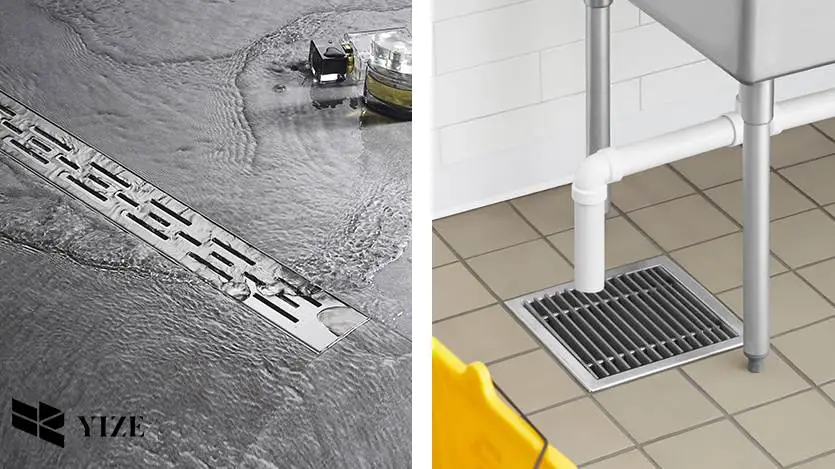
Let’s compare “Floor Sink vs. Floor Drain” to understand better what each one does. We’ll also share some tips on how to keep your drains working great.
Understanding the Fundamentals of Floor Drains
To begin with, let’s get to the basics of Floor Drains. Floor drains are essential components usually found in basements or sanitary spaces. They play a crucial role in collecting debris flushed down the toilet or sink. Plumbing parts help get rid of extra water inside or outside your home.
A floor drain is a hole with a grate around it where water can flow out. Depending on the room, there might be more than one drain. If so, the floor slopes towards each one for easy water flow. The drain is usually flat with the floor for the best drainage.
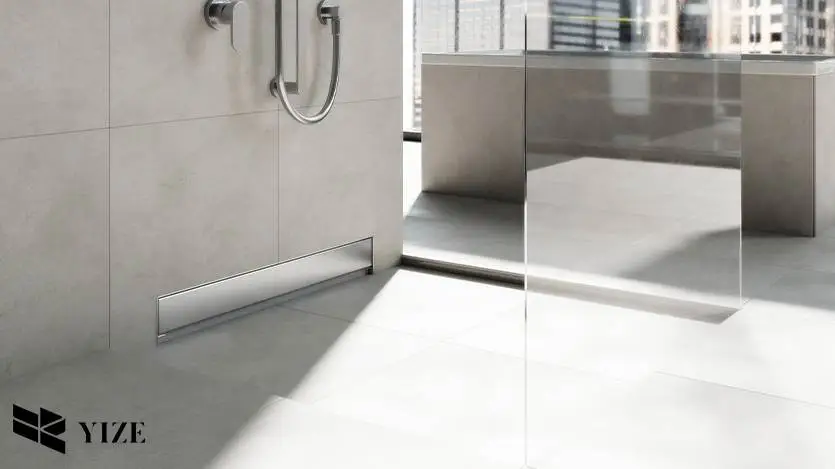
There are different kinds of drains, like straight-line, square, and round ones. Each type is special and used in different ways. Floor drains keep water from pooling, lower the risk of floods, and get rid of bad smells.
Moreover, these drains come in various shapes and sizes, with common diameters being 2″, 3″, or 4″. The type of drain you select should correlate with the volume of water it needs to handle.
Floor Drain: Diving Deeper into Shower Drains
Here, we encounter an essential subtype – Shower Drains. Shower drains are important in the bathroom. They take away water after your bath or shower. You might have straight-line, tile insert, or point drains in your shower. The right drain depends on your bathroom’s design, needs, and floor type.
Diving into the Realm of Floor Sinks
Unlike floor drains, floor sinks are usually in places like stores or restaurants. These sinks have two holes: one for water and another for things like food or trash.
These sinks need more room below because they have lots of pipes going up through the floor. They look like big boxes with a grid on top.
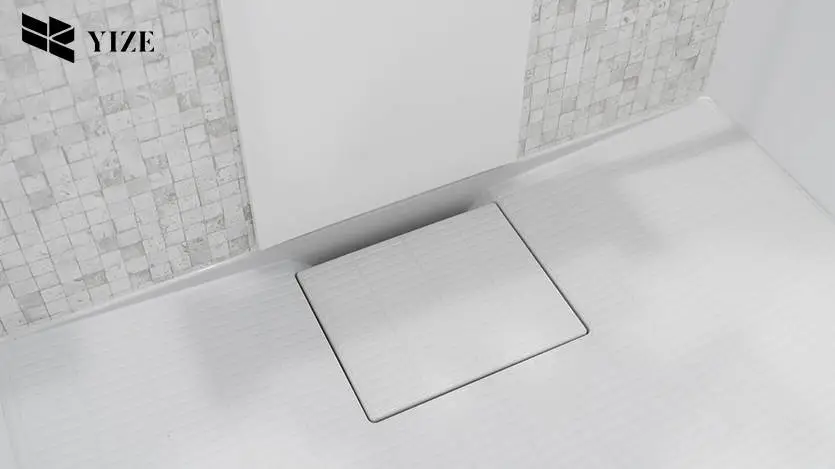
Floor sinks can have one or two big bowls that let water flow out from the bottom. The bowls are bigger than in floor drains, often 12″ x 12″. This means they can hold a lot of water.
One important thing about a floor sink is it keeps dirty water from flowing back into your clean water. To install a floor sink, it’s set into the floor and connected to the drain pipe.
Different Types of Floor Sinks and Their Traps
There are many kinds of floor sinks for different places.
Standalone floor sinks catch big pieces of trash to keep pipes from getting blocked. In houses, kitchen sinks stop food from going down the drain with a strainer.
These sinks use traps like P-traps, S-traps, and drum traps to stop bad smells and gases. P-traps are self-cleaning and found in newer homes. S-traps are in older homes. Drum traps can handle lots of waste, making them good for business use.
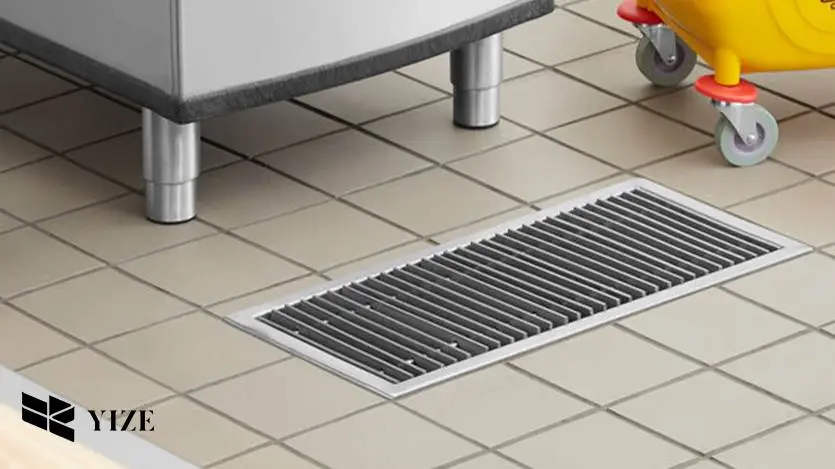
Floor Sink vs. Floor Drain: Key Differences
Design:
Floor drains are grates over a hole. They are simple and pretty shallow. They’re placed at the lowest part of the floor to let water flow down. They go across the floor and can handle water from anywhere. Floor sinks are more complicated. They have sides and a specific shape. They can also hold a lot of water falling at once.
Accessibility:
A floor drain is better than a floor sink if you want a bathroom with no steps. Floor drains, especially straight-line or trench drains, can be put in to give a smooth, flat floor. This makes it easy for everyone in the house to use.
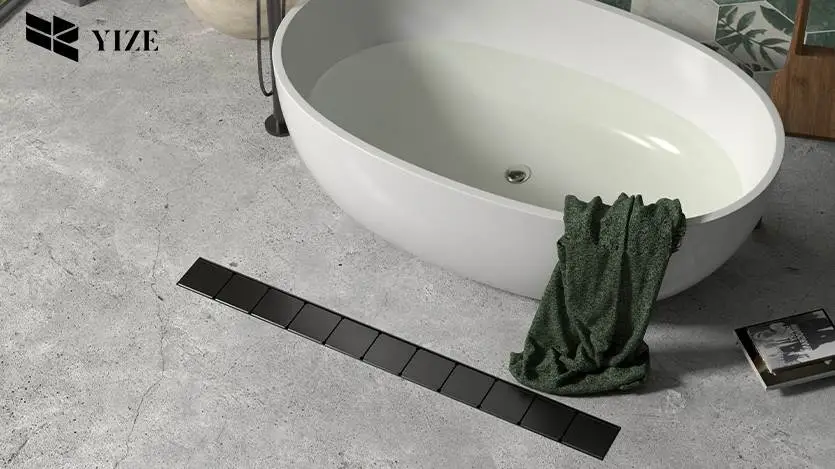
Usage:
Both fixtures get rid of the water but handle different kinds of waste. Floor sinks are for water that’s already gone through another plumbing part. Floor drain deals with waste straight from the source, like rainwater or spills.
Cleaning:
Both fixtures need regular cleaning, but floor sinks might need more work because they can catch bigger pieces of trash. Floor drains, especially straight-line shower drains, are designed to keep them from clogging. They are usually easier to clean and keep up.
Trap Needs:
When comparing floor sinks to floor drains, we need to talk about trap needs. A trap is a vital part that keeps sewer gases from getting into your home. Floor sinks usually need a separate P-trap, while floor drains usually have a built-in trap. This makes floor drains simpler and cheaper to install.
Making Your Choice: Floor Sink or Floor Drain?
When choosing a drain for your shower, the floor drain stands out as the best choice. Here’s why:
Effective Water Management:
Floor drains handle large volumes of water, ensuring rapid outflow and drying of the shower area.
Ease of Maintenance:
Floor drains are easy to clean, aiding in maintaining a hygienic bathroom. Regular cleaning also extends their lifespan and efficiency.
Safety Measures:
With fast water draining, floor drains reduce the risk of slip-mishaps. They also prevent the buildup of stagnant water, which can breed bacteria and fungi.
Design Versatility:
Available in various shapes, sizes, and designs, floor drains can match your bathroom decor. You can choose from materials like stainless steel or brushed nickel.
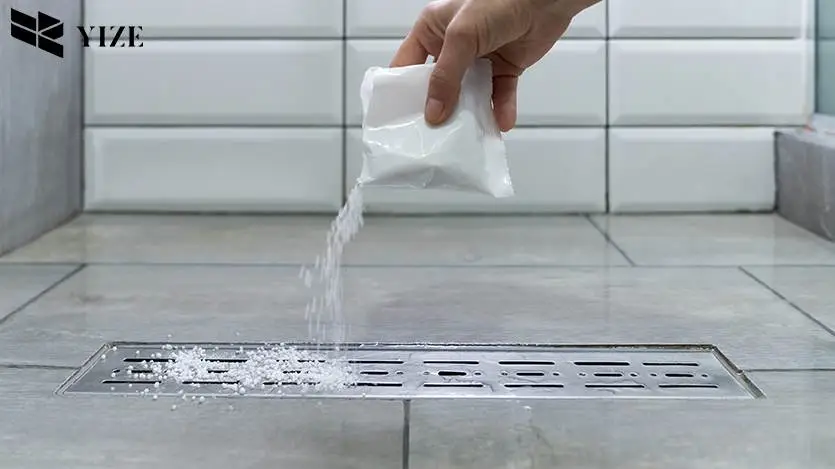
Cost-Effective:
Floor drains are inexpensive compared to other drain types. They are easy to install, require low maintenance, and offer excellent durability, providing great value for money.
Effective Maintenance Tips for Your Floor Drain
- Address blockages at once to prevent potential flooding. A potent combination of baking soda and vinegar or the use of a powerful piston pump can clear minor clogs.
- Remove any obstructions in the pipe, such as hair ties or Q-tips. And flush with hot water until the blockage disappears. So, to keep your floor drains in pristine condition.
- Regularly fill or air these traps with water to create a barrier between your home and the sewer system, keeping unpleasant odors at bay.
Conclusion: Understanding the Floor Sink vs. Floor Drain Debate
Maintaining floor sinks and drains is key for a clean and safe home. Knowing how these fixtures work can prevent drainage issues. Smart choices and regular clean-ups can keep your drainage system running smoothly.
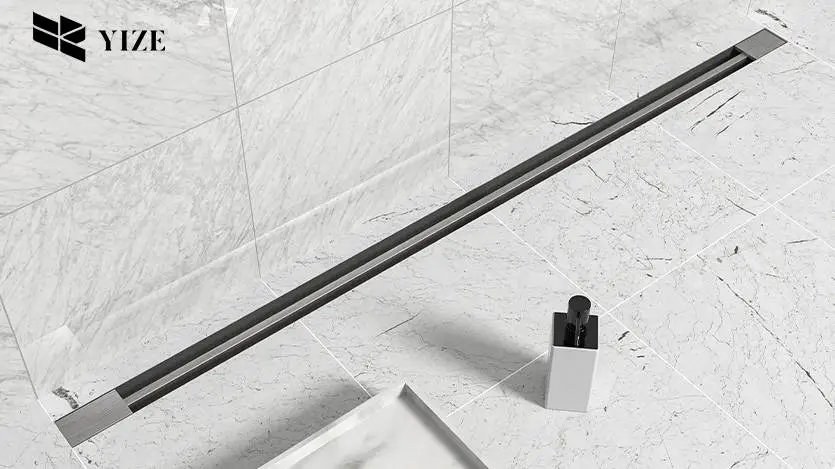
When picking the best drain for your shower, the floor drain is the winner. It’s easy to clean and safe to use, handling lots of water with ease. It’s perfect for any home shower. The right floor drain makes your shower better and safer, lasting a long time. It’s no wonder that floor drains are a top pick for homeowners in the U.S.

